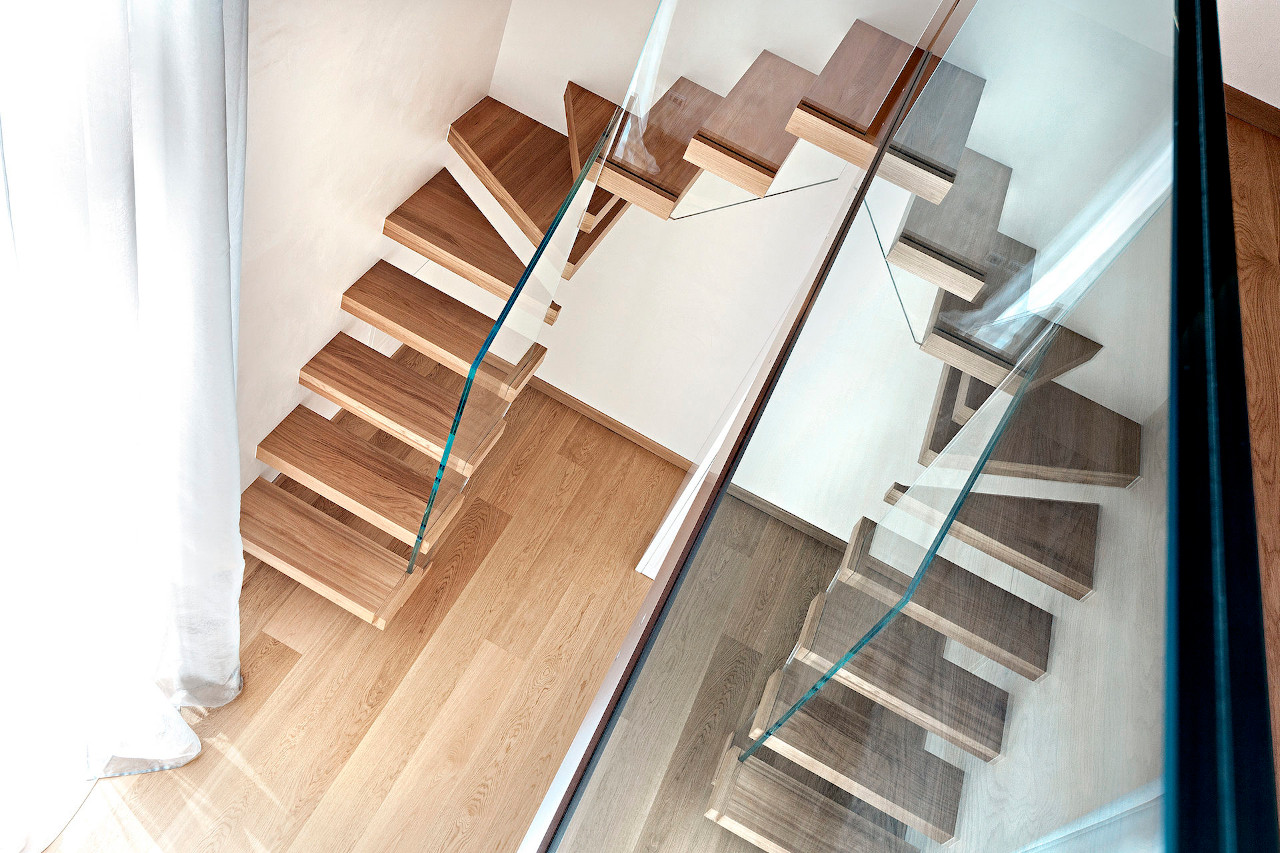
Wooden staircase: anatomy, characteristics, essences
23 August 2023
Scaletta dei contenuti
We have often referred to the specific weight, also in aesthetic-stylistic terms, that the installation of a staircase can involve. For obvious reasons of size, but especially as a connection of style between the host environments, a staircase (especially internal but also for outdoor) goes far beyond its functional status.
This seems even more true when we talk about wooden staircases, all the more so if we treat indoor wooden staircases: the use of quality material, even just as cover for steps, and careful design are able to transform a wooden staircase into a real sculptural piece of furniture.
In the following article we deal with various issues that concern the wooden staircase, advantages and possible disadvantages associated with the use of this material, the characteristics of the most used woods, qualities, defects and variables to be considered by opting for internal wooden staircases.
Wooden staircase: different anatomies and use of wood in the project
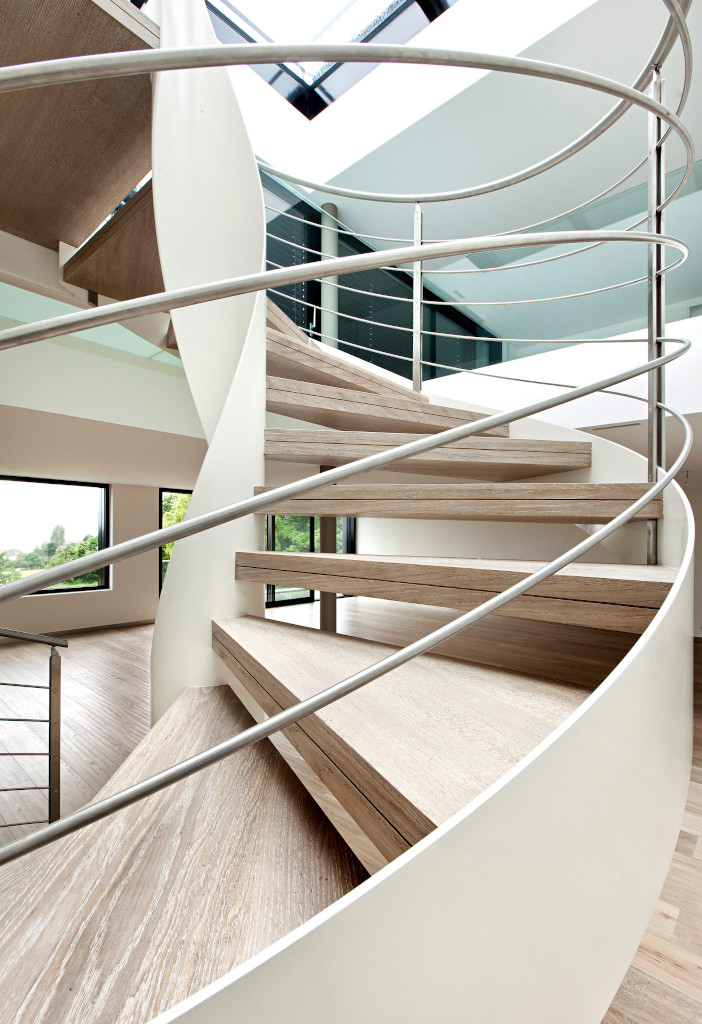
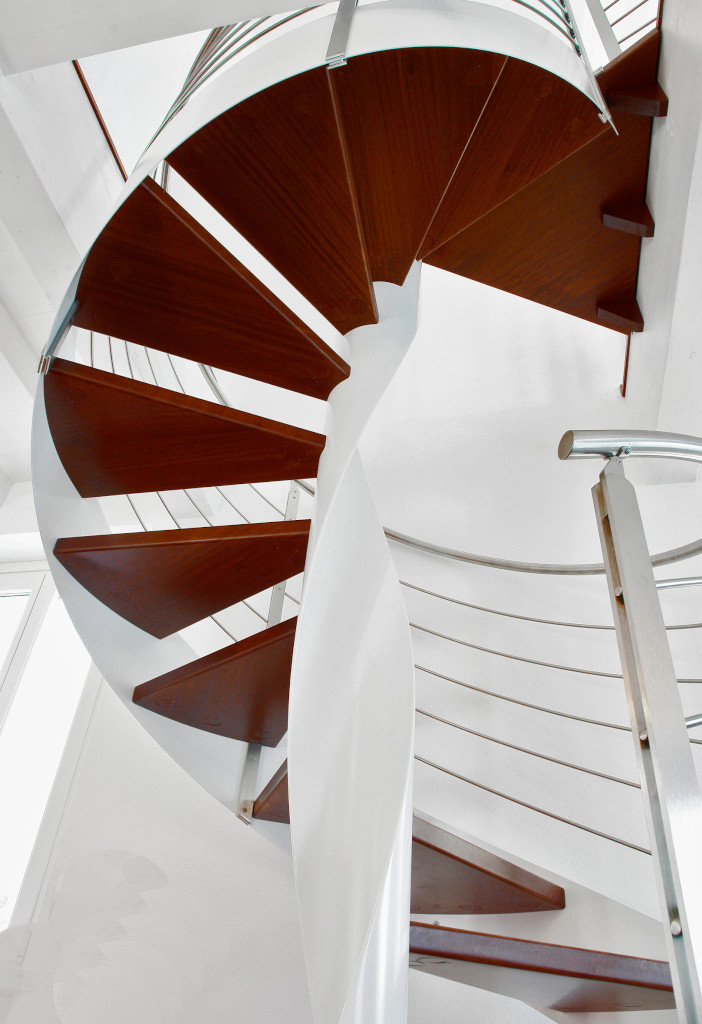
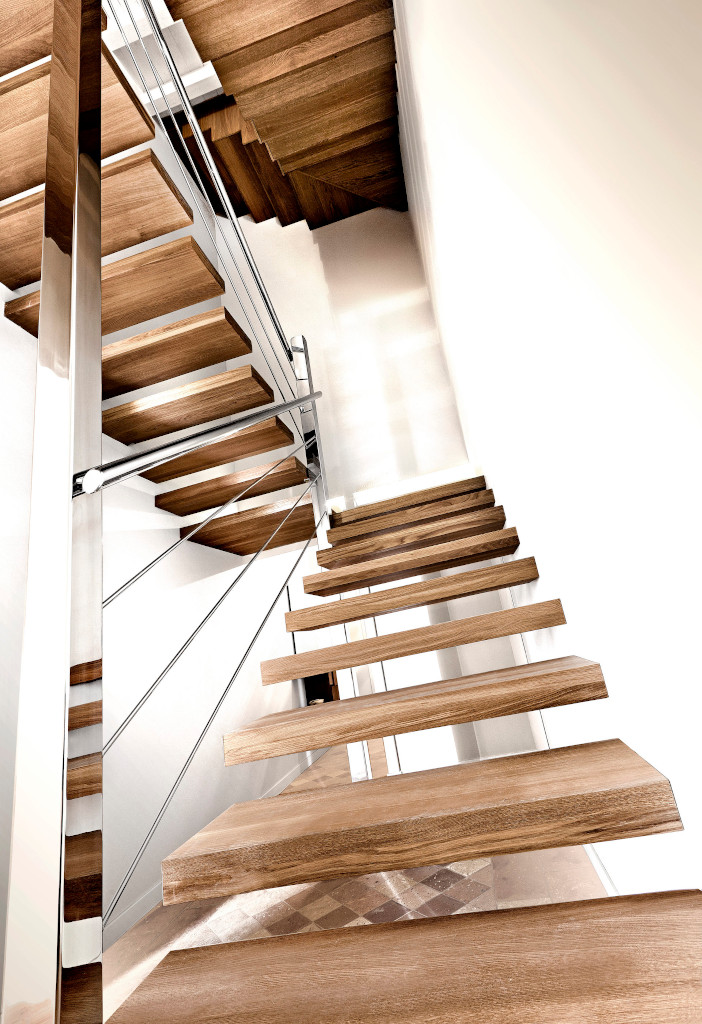
When designing a new staircase or planning a renovation work in favor of an existing structure, it is undoubtedly useful to be aware of some information to make choices in the best direction.
In the area of stairs, anatomy, size, placement and above all materials and finishes can transform a simple functional object into a masterpiece, a real piece of furniture. In the case of a wood staircase, be it overhanging stairs or a wooden spiral staircase or a helical staircase, it is right to keep in mind some general aspects.
We assume that wood is a distinctive material, with excellent physical and aesthetic characteristics adaptable to different interiors. I would add that it is not an economic material, or in any case not cheaper than others considered precious such as marble.
Designing internal stairs wooden made naturally requires an idea of spaces, dimensions and sizes.
If you just want to cover, for example, a masonry staircase or a metal structure, the games change depending on customized sizes or shapes, and above all the choice of the essence makes a certain difference.
The imperfection and irregularities of the wood, in the opinion of many, are positive peculiarities that mark the charm of a wooden staircase, wooden staircase for indoor or outdoor (properly treated), inserted in a context more intentionally rough or classic elegant.
Carefully thought-out details can make the difference between a standard installation and an unforgettable wooden stair case, for example the insertion of steel to give a solid wood step an innovative and modern look.
Wooden staircase and its features: what is best to know to make the right choice
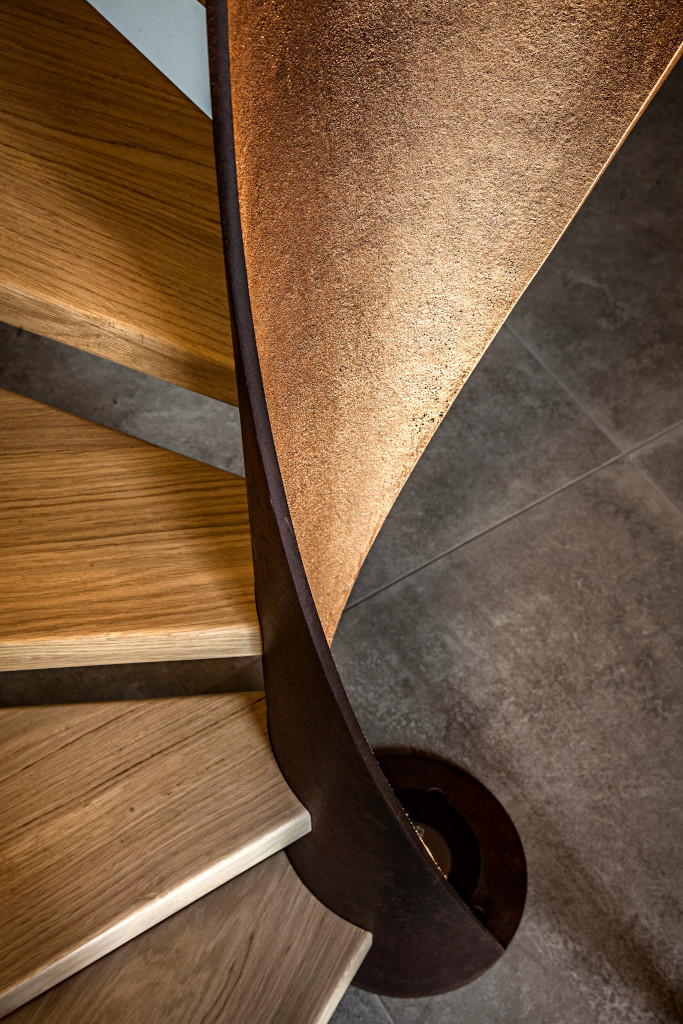
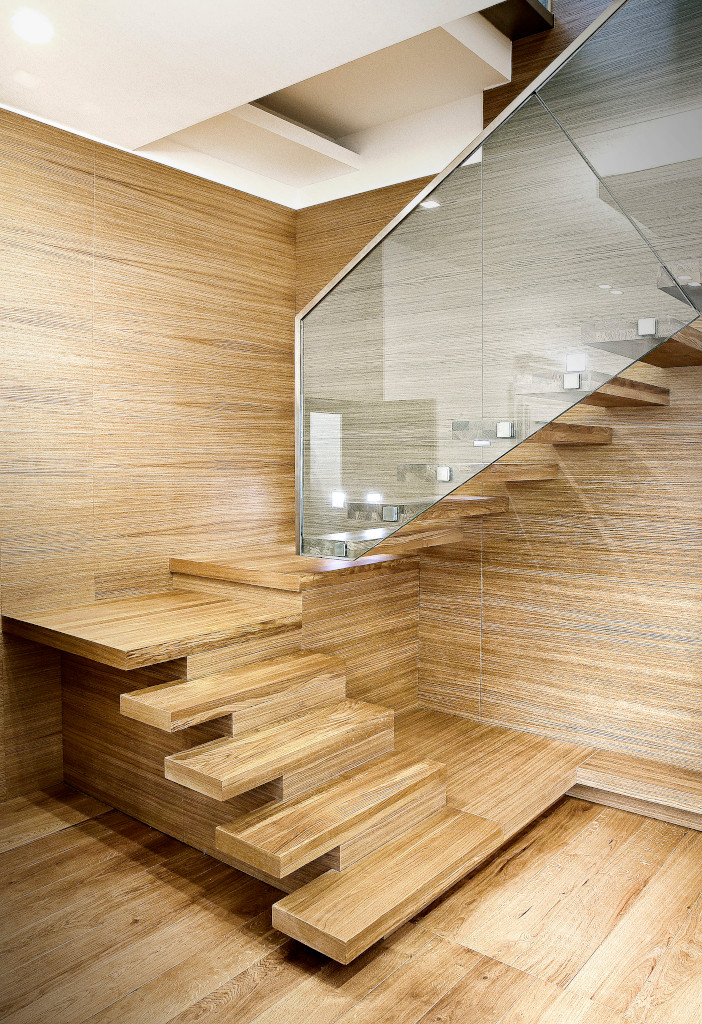
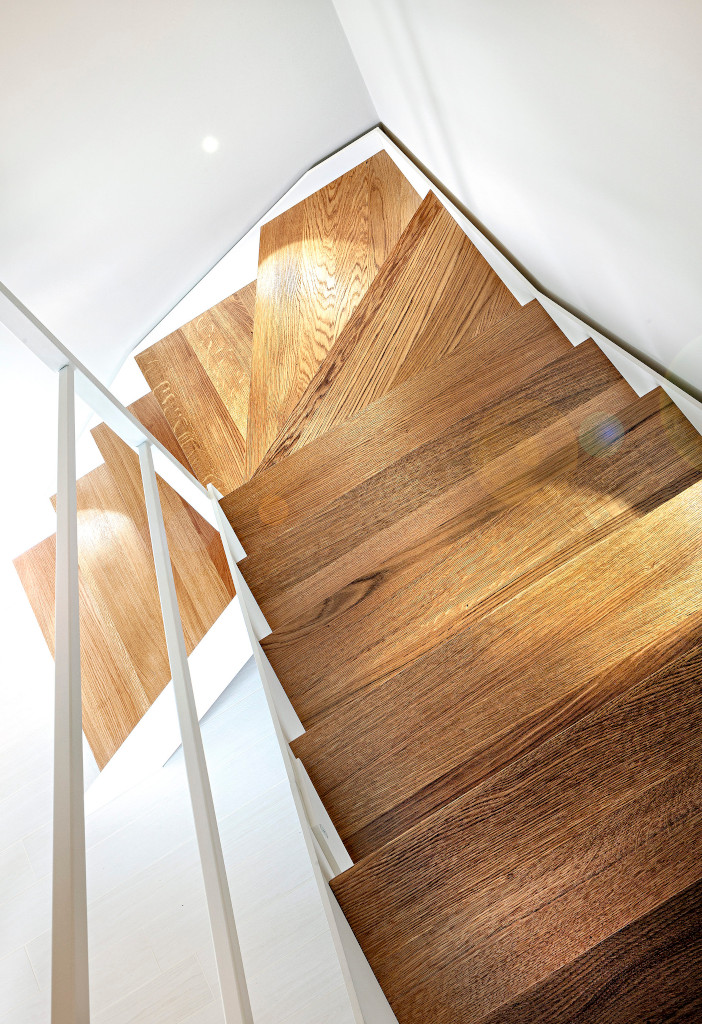
One could consider an internal staircase as a sort of backbone that connects not only the various levels, but also the style of the various rooms that the staircase crosses.
Its aesthetic importance is therefore evident. An interior staircase wooden made project must be the result of careful study first for safety reasons, then immediately for optimization of spaces, use forecasts ,and, as mentioned, for aesthetic purposes.
Many aspects fall under the aegis of personal taste, some other aspects of a project are ways forced by measures, forms or other interference including, why not, the need to economize.
Different wood essences produce more or less suitable results for different uses, and if left natural they have extremely dissimilar aspects.
But in general the flexibility, the lightness but with great resistance, make the wood material more than suitable for covering stairs.
Above all, thanks to the relative ease with which it can be transformed, it is wonderful both used in clean and linear shapes, and in sinuous and rich forms. The fashions pass, the wood remains a timeless anchor especially in the interior decoration, whether they are classic or innovative.
Wood is renewable and biodegradable, insulating, with excellent mechanical performance: in fact, among the characteristics of wood appreciated in the realization of stairs we find its resistance to bending and, as already mentioned, lightness.
The ease of processing allows easier movement in cases of repair or even replacement. But above all, using the strongest woods, there are no problems with stress management or too high loads because solidity and strength of this material are acclaimed.
Doubts and criticalities related to internal wooden staircase
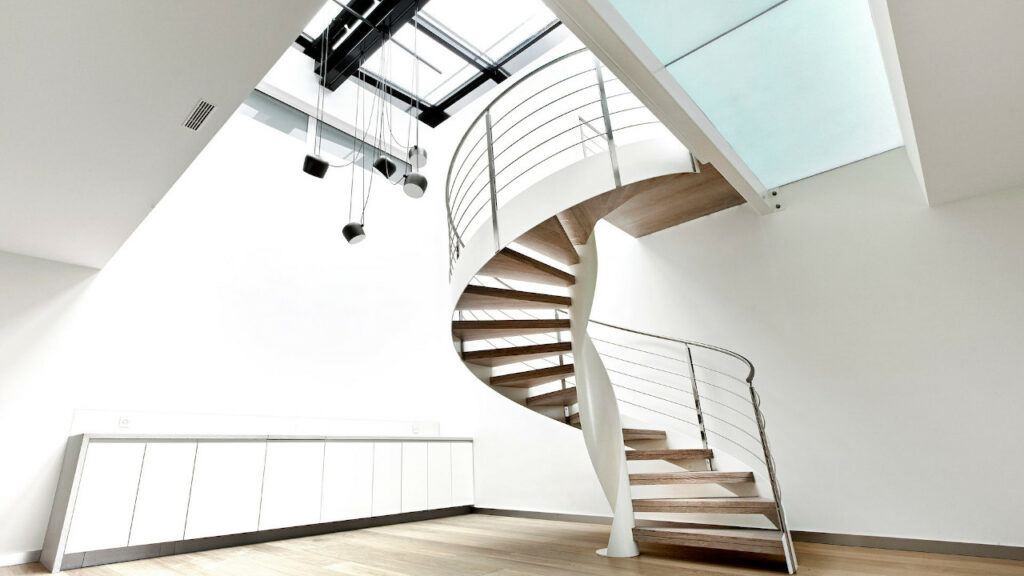
Going naturally beyond what are the personal tastes that concern the material itself, the various essences with their shades and veins, as well as the styles that the use of wood is able to more or less harmonize, there are undoubtedly some objective criticalities that may concern the wood and its use for internal wooden staircases.
- The first aspect to emphasize is that although well worked, treated etc., there is no real hardwood, especially in reference to other materials; this natural characteristic makes it more susceptible to imperfections, both inherent and given by use.
For some this lack of perfection can be a serious defect, very often in reality those who love this material trust in the lack of perfection, in its small changes, in the signs that make it live, so to speak.
- Wood is a material as we mentioned, alive; more than wear, a fatal enemy of wood is moisture. So when we are considering the option of a wooden staircase it is good to think about the fact that there are many aesthetic treatments and not – paints, waxes, glazes- but also that may not be enough to preserve any damage of a context from excessive humidity.
- If we talk about noise, we could say that, undoubtedly compared to what happens with other materials, the footfall with shoes could produce some extra sound, especially if the structure of the staircase wood covered was in metal.
- From the point of view of the price it can reveal big oscillations, since a lot, in a project of wood staircase, depends on the chosen essence, the anatomical shape of the staircase and the workmanship, for example purely custom-made, to which the steps and other details are subjected.
- Undoubtedly like all natural materials, it requires regular cleaning in order to be maintained in the best way over time; so even stairs wooden made require a minimum of care (dustproof and absolutely non-abrasive damp cloth).
Wooden staircase for interiors: the most used essences
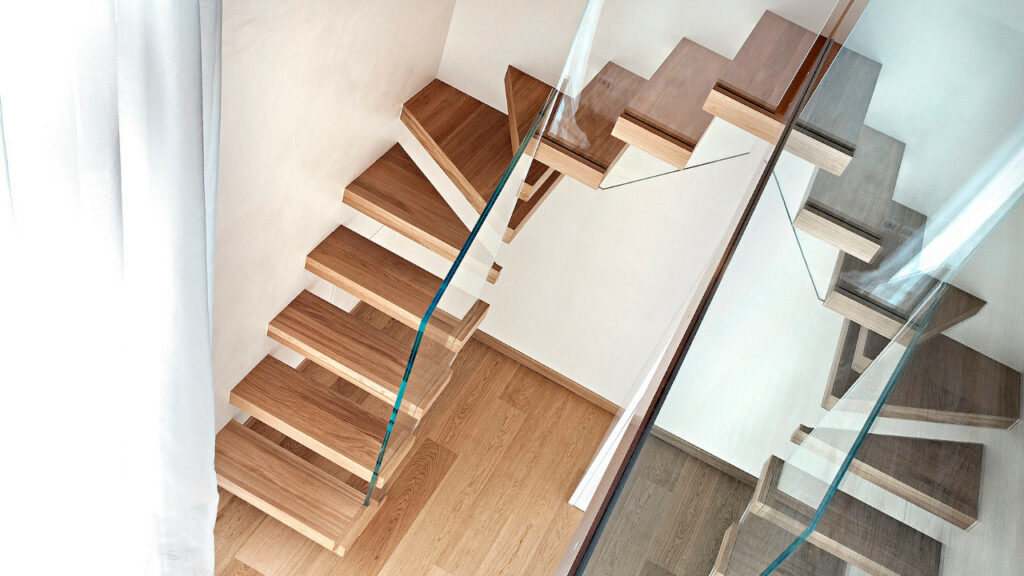
Deciding to move towards internal wooden staircases, what matters most is having a general expectation of the type of stylistic imprint most suitable for the spaces in question.
In fact it is possible to reach, thanks to the choice of different woods and other details, very high quality and aesthetic standards for modern interior stairs but also with a much more classic-traditional appeal, according to the needs.
In fact, there is not the perfect essence for a wooden staircase, simply the one that best suits your needs.
Taking into account an interesting macro division between local conifers ( for example pine, fir), local deciduous trees (such as oak, cherry, maple walnut birch etc .) and exotic woody essences ( such as mahogany, cedar, iroko, teak, wenge etc.), let’s take an overview of some of the most used essences in the wooden staircases
- Rovere (Italian commercial name)/ Oak: oak wood derives not only from oak but also from holm oak and other plants, and is used for the most varied productions, from parquet to furniture to artistic artifacts.
The resistance to humidity, in the different varieties, makes it the chosen one also for outdoor uses. The oak wood, red with pink or white undertone that turns to yellow-beige, is easily worked and has among its peculiarities a great strength and general resistance, which makes it perfect for a wooden stair case.
The appearance of the weft is fine, aesthetically pleasing; compared to other essences is heavy and as costs fall in the highest range.
- Maple: this essence has a greater strength than oak, it is resistant and massive. In contrast to this density, the gradient white color aesthetically lightens this variant of wood.
Especially for finishes and interior decoration, but also floors and stairs, it is appreciated for its color that,left in a natural way, is wonderful especially in the color contrasts.
The appearance is smooth, easy to polish and maintain over time, already somewhat decorative in a natural way because of the radius that radiates on the various background colors that can take different variations.
It does not tolerate humidity and temperature changes but in general it is extremely strong; on the other hand a certain wear, marks and scratches, could be more visible given the color.
- Ash: the best quality of this essence is revealed in the elasticity and a certain non-deformability. This flexible resistance does not make it suitable for outdoor use.
The reference color starts from a central core in light brown tones but then turns to gray or yellow in various shades; can resemble oak wood but maintaining a lower specific gravity.
- Walnut: we assume that the color of this essence is extremely varied depending on the place and soil, from brown to yellow but with a stained and uneven appearance; even the veins can vary a lot.
The beautiful texture, the malleability and the ease of processing despite the density have made it the favorite for a long time for furniture items, floors and a wooden staircase (not recommended for outdoor use, given the lack of resistance to weathering).
Precious but also quite expensive, in all the varieties scattered in the continents.
- Iroko: used in places of origin – African equatorial forests- in many ways, holds excellent qualities from a mechanical point of view, such as flexibility. In particular, it resists water well, a feature that makes it useful for outdoor furniture or outdoor wooden staircases.
Compared to oak wood is less expensive, but no less durable, in fact it is also appreciated for quality doors and fixtures, as well as for flooring.
The natural color is quite particular because starting from green to a dark yellow, it fades over time turning towards yellow-brown. It is very often used in wooden staircase projects, to cover the treads, given the proverbial strength and durability.
- Poplar: it is a relatively cheap wood and easy to process, aesthetically valuable was used instead of the most expensive walnut.
The appearance is homogeneous, the weight is light, perhaps a little too soft compared to the impact can be a relatively cheap compromise but not comparable to other woods for durability over time.
Details that can make the difference in a installation of wooden staircase for interior
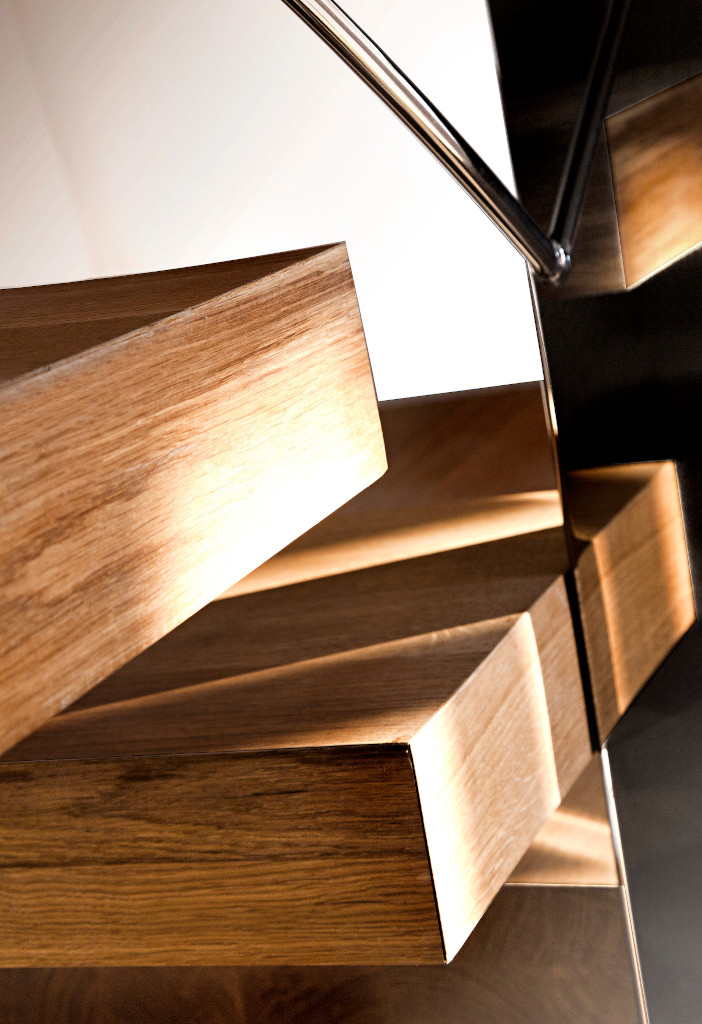
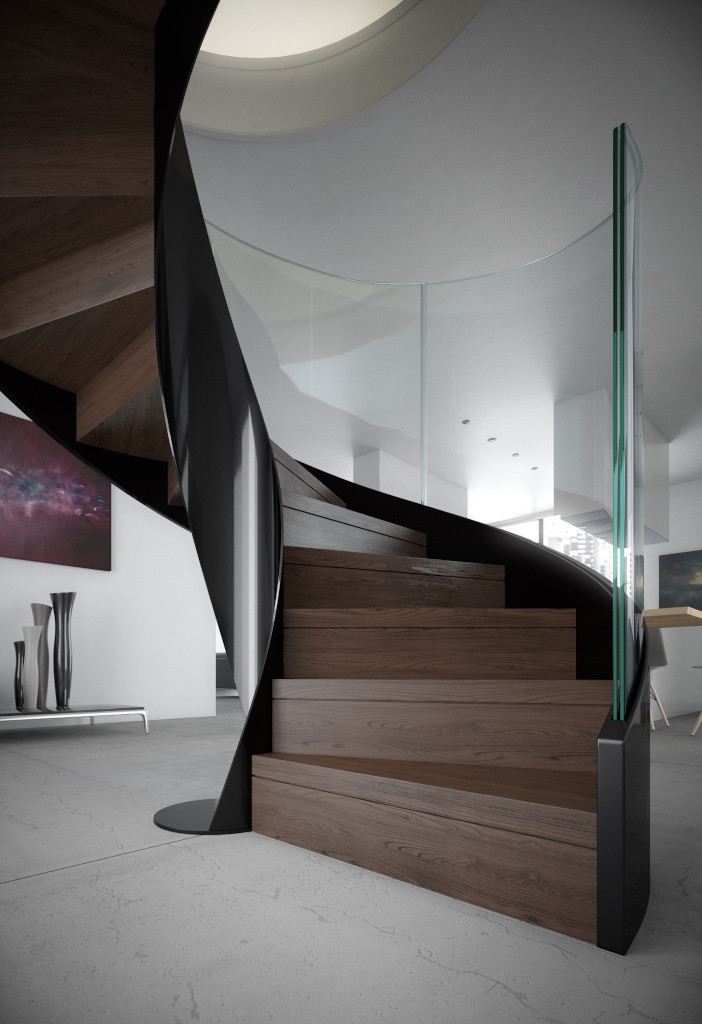
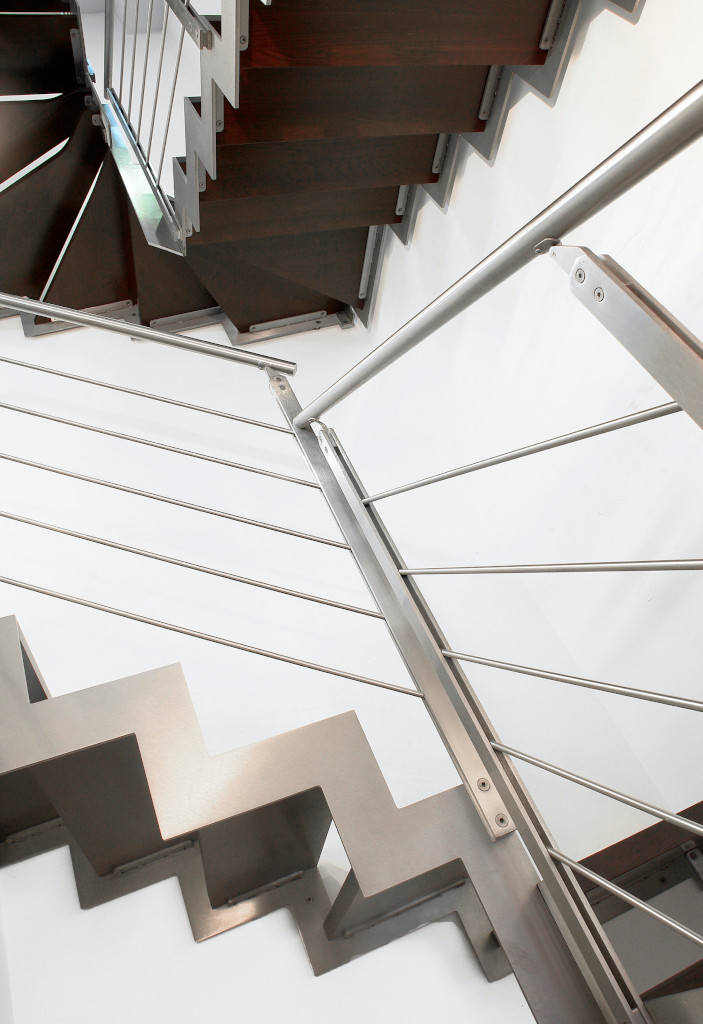
A design work such as a staircase, mostly for interiors, consists of different elements and different details.
And as always happens in interior design the mood, the overall aesthetic impact is more than the sum of various factors, some strike immediately, others are less striking but which contribute to the overall result.
So even an indoor wooden staircase has its own anatomy, it could be a wooden spiral staircase or helical staircase or a suspended cantilever staircase for example, it could have a masonry or metal structural base.
The wooden staircases represent a vast set of specimens that can have nothing to do with each other: modern or traditional, different in color and grain of the wood, elaborate and rich or bare, essential to the maximum, painted with a shiny white or very dark, with a light appeal or dense and consistent.
The type of wooden staircase varies according to the function and the remaining furniture.
Of course different stairs if we talk about connecting stairs between different levels of a building, then common areas to manage, if we talk about an internal wood staircase that connects floors of a house or a small staircase, for example for loft.
The sense of warmth of steps or a wooden railing can hardly be replaced by anything else, even for the sense of fullness, of natural materiality more or less refined by the type of workmanship.
The combinations with materials such as glass and metal do nothing but enhance these same characteristics, intrinsic peculiarities of a simple material, that connects present and past, able to be perfectly inserted both in linear and curvilinear shapes.
The choice of a particular railing, the continuation or not of a parquet floor or the shape of the steps, the choice to close the lift or not, to insert unexpected details such as lights or steel details… you can get so different results that it is impossible to manage to fit the wooden staircases in a category of unique style!
The certainty, on the contrary, is that it is absolutely possible to obtain modern internal stairs of any shape and size using the same wood that covers a rustic staircase, with different processes and treatments, but especially with different structural or ornamental details.
Wooden staircase: what affects costs
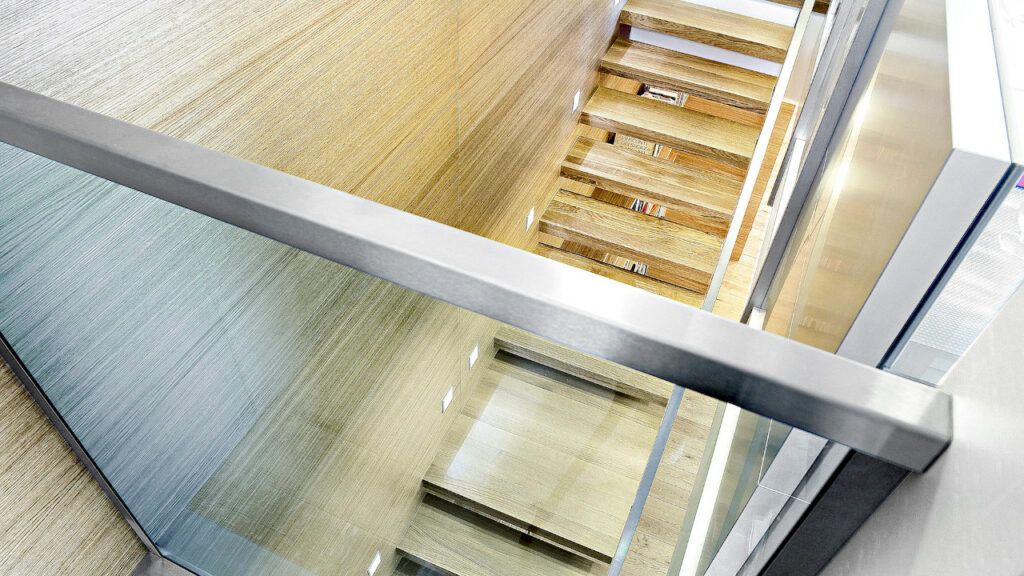
Generalizing on the discriminating elements, mentioned above, that can affect the cost of a staircase wooden made installation, it is certainly the case to consider the type of wood, shapes and dimensions.
What does that mean? Quite simply, some essences are already more expensive than others.
But above all getting out of a standard step size, for example (width 80-100 cm) can vary a lot the expense.
Of course, the anatomical shape of a wooden stair case and/or any landing or step as different as the fan, that is located in the change of direction at 90 degrees or 180 of the ramp in question, can change the cards on the table.
Even the creation of a monolithic corner step, for example, can lead to considerable cost increases.
In short, the customization in a project of a wooden staircase undoubtedly involves additional economic costs.
Why opt for internal wooden staircase project
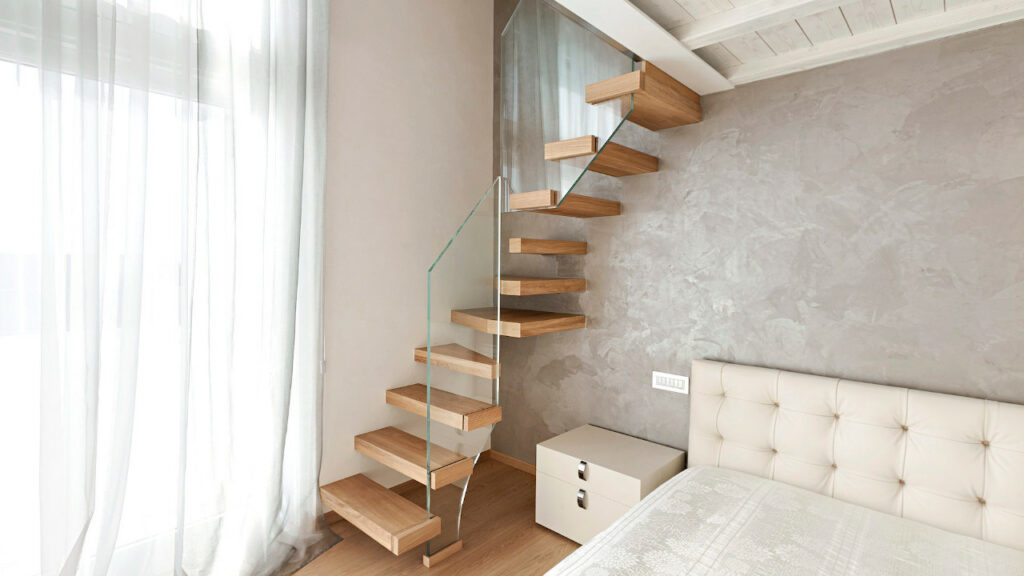
Although fashions and trends change, they take courses and recounts, they inspire great novelties or remain anchored to the pivotal points, in architecture, construction, interior design the wood, like natural stone in a different way, never loses its importance and appeal.
We have seen how different essences can diverge from each other in appearance, physical characteristics, even smell… but it is absolutely possible to talk about some general characteristics of the wood material, peculiar characteristics that can motivate you to orient yourself towards wooden stairs – especially interior wooden staircases – instead of other materials.
Wood naturally combines durability and reliability, as well as an undeniable natural charm.
At the level of processing, it is really a material usable in the most varied ways, as well as in the various essences.
Wood, used since the most ancient times of humanity, has always been considered the material for interiors that exudes warmth, a feeling of well-being and a kind of serenity.
And if in other times its use for internal stairs could be a more or less forced choice, now the preference that is given to it is due to its material characteristics.
In line with the same material present at other points of an interior, but also chosen by contrast, to warm up an atmosphere that needs it, you can use it in an interior wooden staircase in combination with very different structural materials, such as metal, iron or steel or close to glass and crystal.
The chosen style for the interiors is susceptible to every detail, the weight of each color variable, the differences or similarities of the textures etc..
A wooden staircase (structure or even only covering steps) can instill a particularly enveloping and relaxing atmosphere, but also convey, for example, a contemporary industrial style.
Wood can adapt to any shape and style, its potential is really high: wooden staircases for interiors can be placed between extremely different aesthetics, as elements of tradition or modernity.
Flexible and resistant, insulating, lightweight: wood in its variants is a material that makes the difference in the furnishing elements as iconic, simple if you look for essentiality but also precious when processed.
Wood processing has a long tradition of excellence in Italy, therefore the ability to handle it together with the high quality of the material give rise to real masterpieces with a strong visual impact (not only visual, contact with wood is hardly comparable to anything else)
And if the installation keeps the line of a style, of a desired imprint for its spaces, the use of wood creates a powerful identity and, as already mentioned, also aligns the taste to the most current trend of bio-architecture and eco-friendly.
The wooden staircase with Oak and Iroko essence
The realization of wooden staircases for interior, structural or simply coating on a metal base or masonry, has countless variations on the theme, starting naturally from the anatomical shape of the aforementioned internal stairs (visible, overhanging, spiral or helical staircase).
The other primary element that can differentiate stairs wooden made is the choice of wood essence, which changes a lot in terms of aesthetic performance as well as the natural differences in the physical qualities of the variant.
Let’s take then completely different examples of wooden stairs or covered in wood: every wooden staircase shares with each other only the use of oak or iroko wood, of which we remember some characteristics for which are so often chosen in these types of installations.
So let’s see, below in this short article, different types of wooden stairs for interior that, with the same use of oak and iroko, have a totally dissimilar success, albeit perfectly integrated into the space and style
Oak in a wooden staircase for interiors
The italian name Rovere is actually the commercial term by which the variety obtained from the Fagacee (oak but also holm oak). This essence is used for many purposes and always with excellent results, given the positive peculiarities that characterize it, from which perhaps only the cost is excluded.
We can include different types of oak that are American, European and Japanese, each of which is divided into at least two variants.
The peculiarities that make oak wood one of the favorites in the realization of a wooden stair case for interiors, as well as for precious furniture, load-bearing structures in the architectural and construction sectors and much more are many.
Mechanical strength, hardness, stability and good durability are just a few; we add ease of cutting and processing, and the ability to lend itself very well even in curved elements.
The color is brown with a tendency to yellow, lightens over time and, in any case, can be subjected to various types of finishes (for example for a floor/ parquet): natural, bleached, antiqued, sanded and brushed.
It maintains a perfect balance between performance and aesthetic potential ( we have to add among other things that it also resists moisture and weather, so it is also suitable for outdoor use).
Another important element to add in this brief synthesis is the difference between boards and solid wood: the latter refers to the heartwood, the innermost and oldest part of the trunk and the most durable; the solid oak wood has never been subjected to processing or treatment to the exclusion of seasoning.
Solid wood in particular and oak wood in general have a single disadvantage, namely the cost; however, this aspect, which undoubtedly affects even just in the case of cladding steps in an interior wooden staircase project, is largely compensated by the aesthetic and functional performance of this essence.
Example of wooden staircases for interiors completely in oak
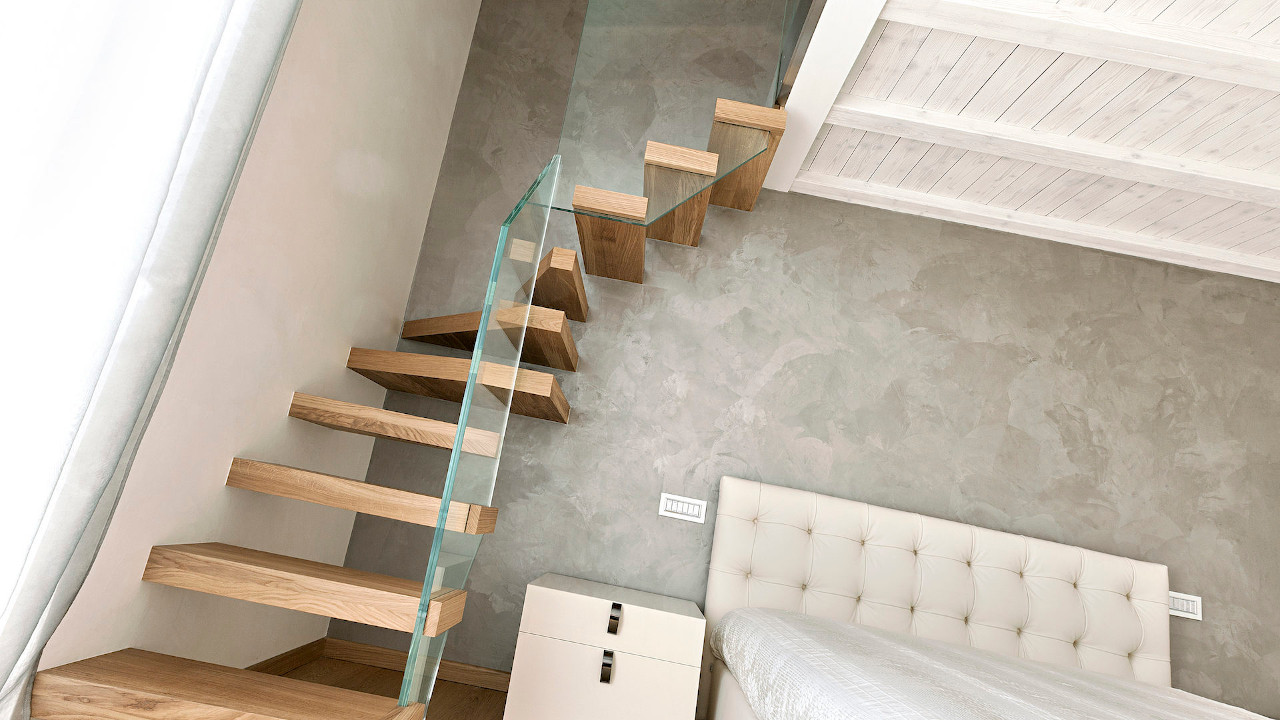
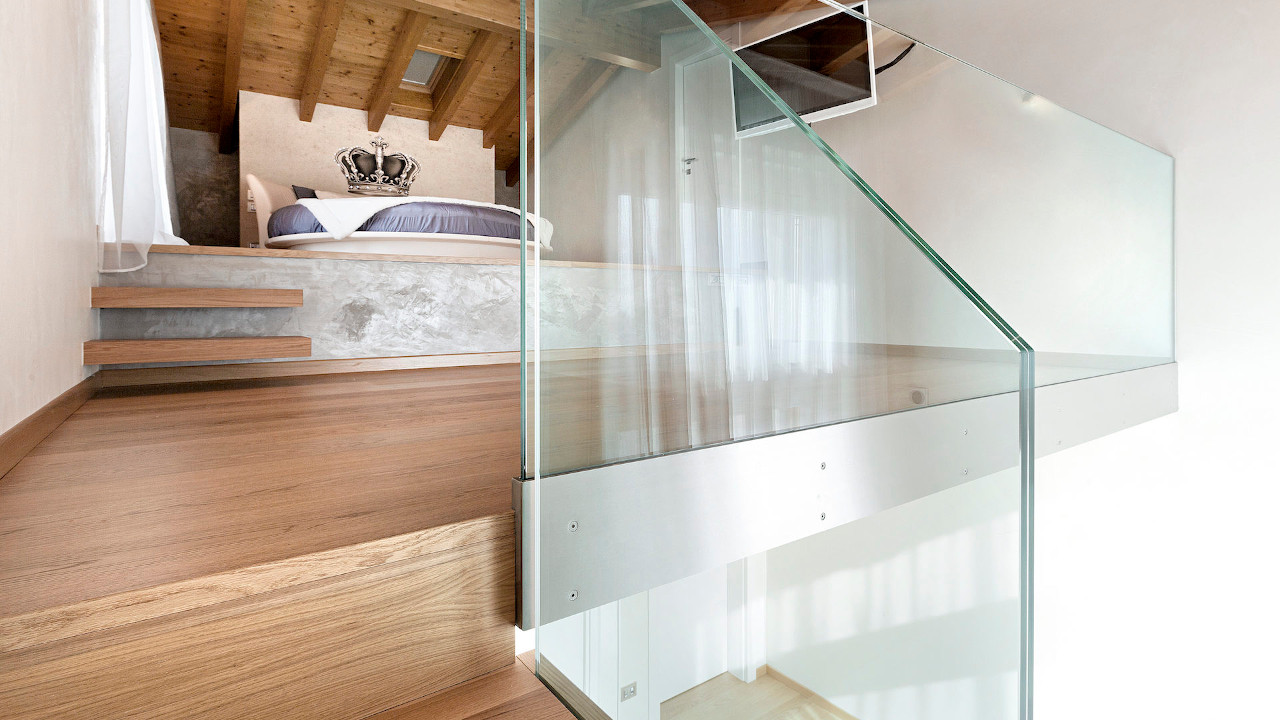
Let’s talk about a typical example of the so-called suspended staircase – cantilevered stairs -for which a solid oak stained sample; each step has a thickness of 80 mm.
In the wooden staircase for interiors or in any other material that aims at sobriety and maximum essentiality, the effect of the suspended steps anchored to the wall is of great help in this.
To maintain the lightness and the nude effect, the railing that accompanies the ramp has been made of extra clear structural glass with a thickness of 10 plus 10 mm.
The end result of this wood staircase is, in its simplicity, extremely impactful and perfectly integrated into the host spaces.
Example of a modern interior wooden staircase (with oak steps)
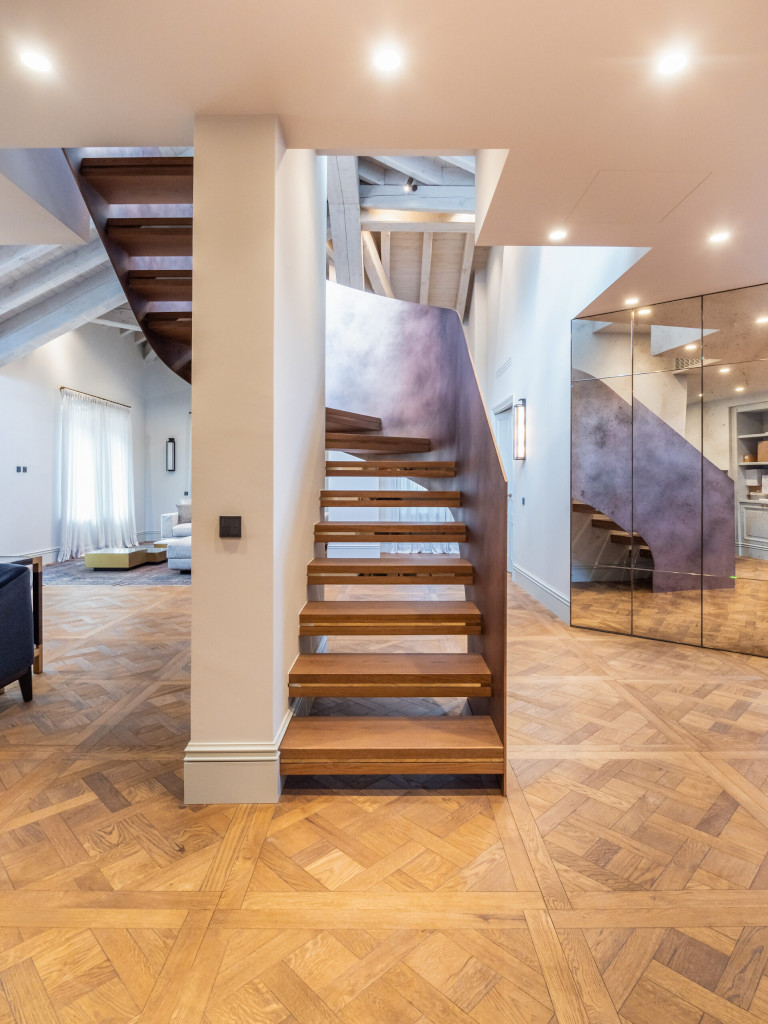
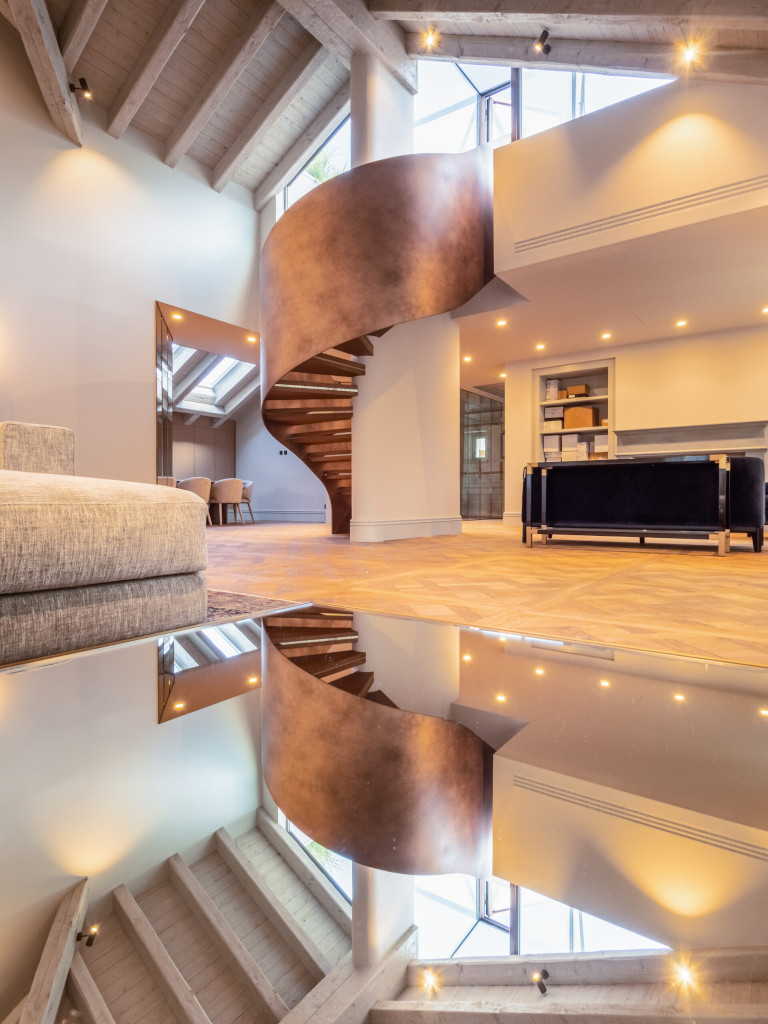
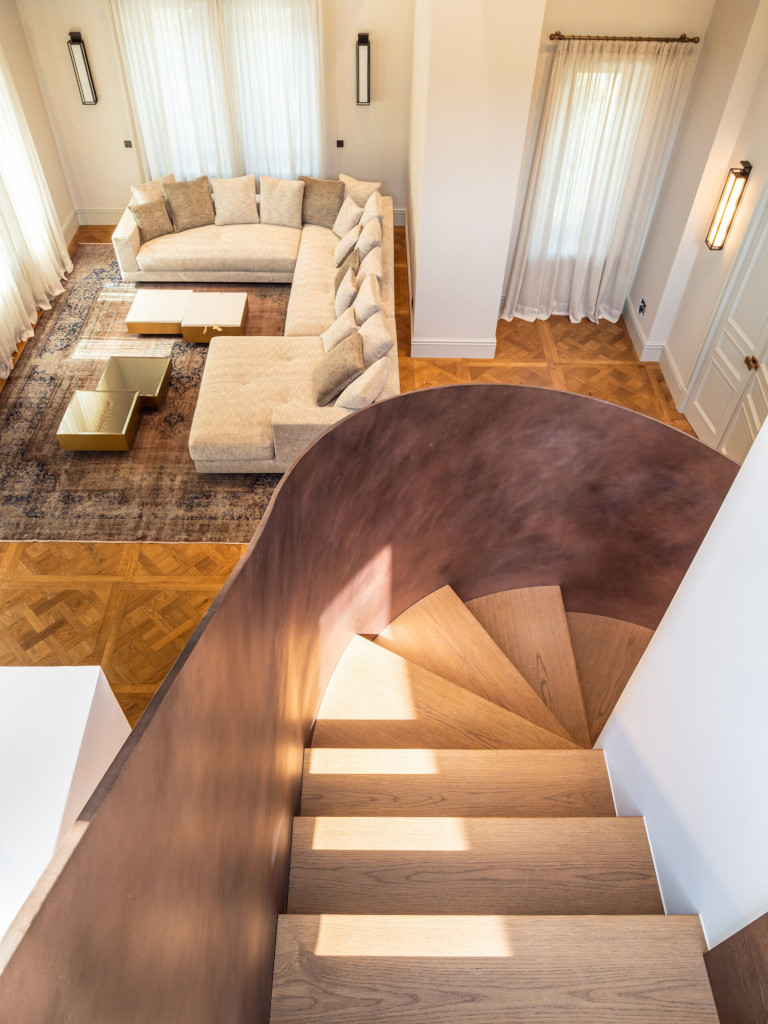
The styles of a staircase wood made for interior can be multiple: the wooden staircase we talk about is really original.
Modern and completely customized to the needs of the customer, this wooden staircase does not revolve around the concept of essential, as much as a desire to leave open-mouthed anyone who has the opportunity to admire it within its host context.
Model “Vista Project” as designed under the guidance of a custom design, consists of a load-bearing structure made of metal, a blind parapet (right side to rise) spectacular stained sample, on the spot, in copper bronze color with cloud effect.
Contained within this design parapet the steps in solid brushed oak and always painted sample thickness 80 mm and steel inserts.
In general, tailor-made design, like the one made for this installation, can go so far as to make, even with a handful of distinctive details, a staircase something like a sculptural piece of furniture.
Iroko for internal wooden staircase
Iroko wood from the point of view of resistance to humidity and temperature changes is one of the most interesting essences, an aspect that mainly concerns its use in outdoor environments.
The origin is localized in the countries of equatorial Africa and has always been exploited to create local homes (the plant is considered sacred and its leaves used for multiple purposes).
Despite the great resistance and durability – it should also be noted that it shrinks very little compared to other varieties while maturing-cutting and processing are relatively simple.
This allows an abundant use for fixtures, flooring and, regarding what interests us here, for wooden stairs, internal wooden stairs and also for outdoor use (everything related to outdoor furniture and even as wood for boats).
The impact resistance is not maximum, but walking barefoot on floors or iroko treads is risk free given the compactness (no flakes and fragments). The performance is at the level of Teak but the cost is much lower.
At a purely visual level this essence involves great variation of colors that start from yellow to very dark brown.
Its versatility from several points of view, including that of color, makes the iroko widely used for various purposes, including the realization of a precious staircase wooden made.
Example of indoor wooden spiral staircase with Iroko
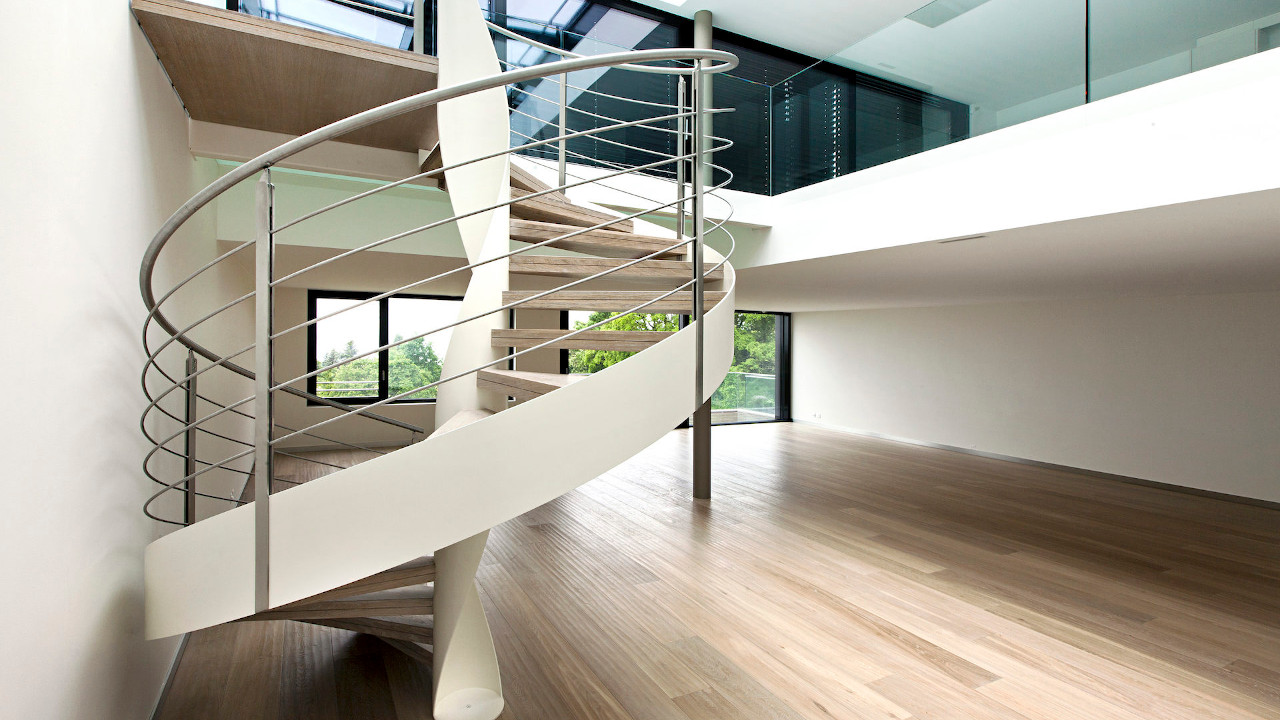
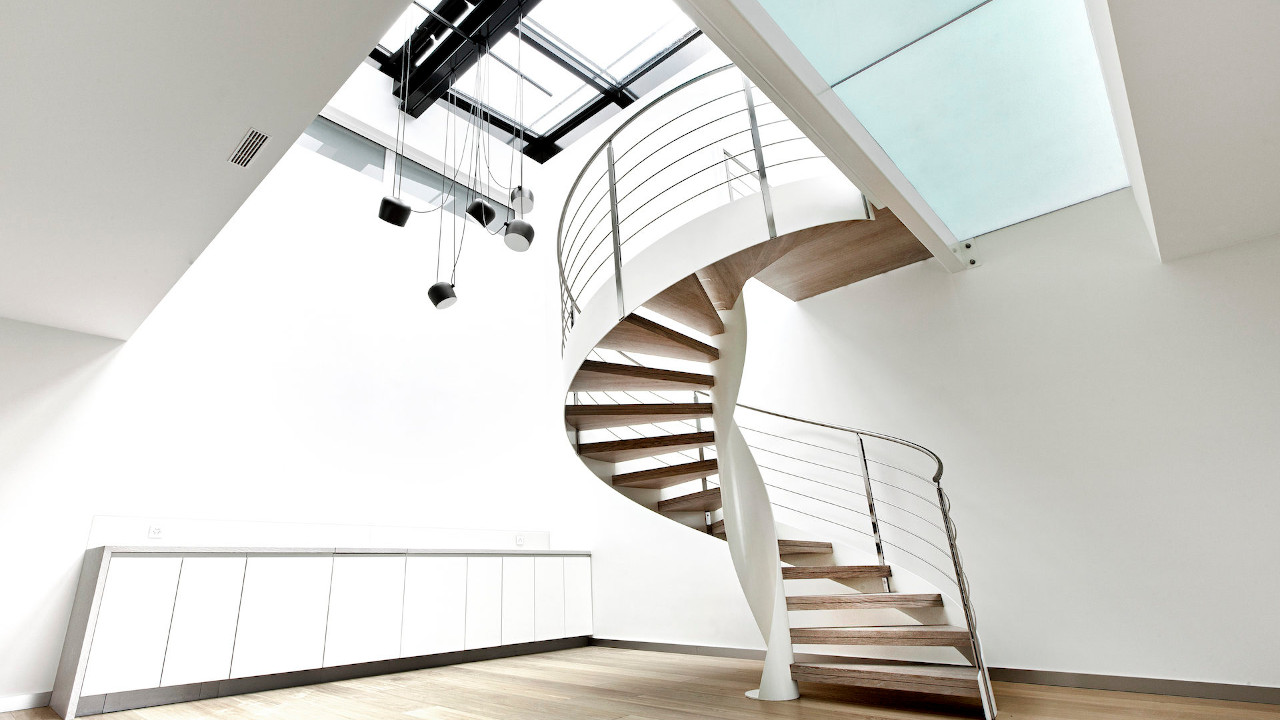
Let’s look at the umpteenth example of a wooden staircase, or rather, that uses wood for the steps. The latter, which is part of the wooden interior with a spiral structure, is particularly clear and bright because of the color choices.
In the city of Geneva, Officine Sandrini installed this wooden spiral staircase with circular base; the central base has a diameter of 245 mm, the structural metal base has been painted in RAL white-glaze semi-gloss.
The wrapping band of the steps has no visible joints; the steps were made of solid iroko wood, painted as sample, with thickness 40 mm. In this case, the railing was designed in satin stainless steel, consisting of a handrail 33 mm in diameter and two 10 mm diameter currents.
In general, it is an example of how wood can be enhanced within ad hoc designs consistent in style and color choices.
Learn more about a wooden staircase
Do you want to know more about a wooden staircase, how to include it in your project or do you have any curiosities to submit to our experts? Fill out the form, and request a free telephone consultation!

